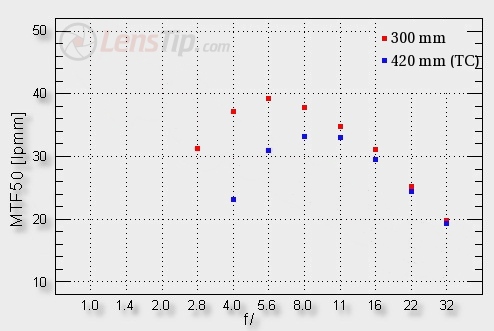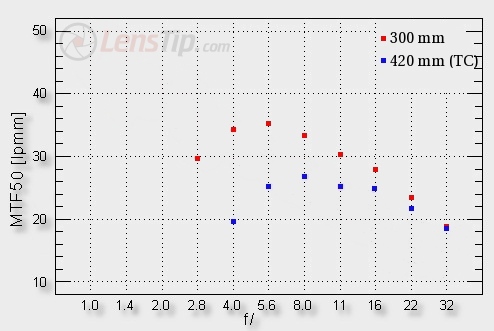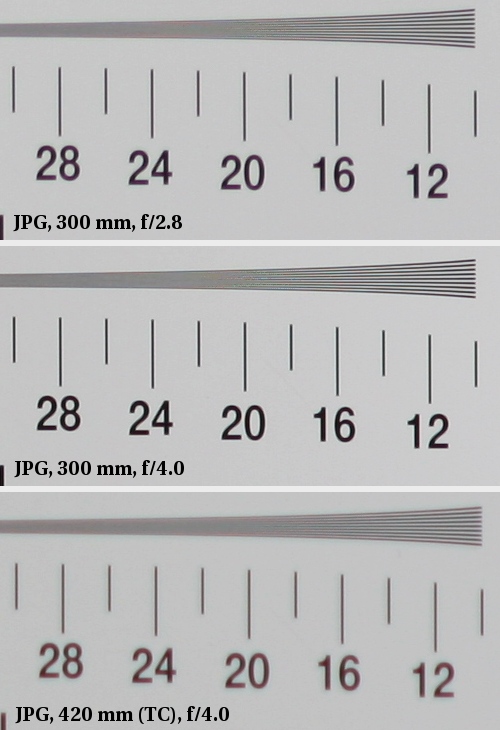Sigma 300 mm f/2.8 EX DG HSM APO
4. Image resolution

Red dots concern the lens itself, blue dots concern the lens-plus-teleconverter set - an original Sigma teleconverter 1.4x from the APO series in this case.
Please Support UsIf you enjoy our reviews and articles, and you want us to continue our work please, support our website by donating through PayPal. The funds are going to be used for paying our editorial team, renting servers, and equipping our testing studio; only that way we will be able to continue providing you interesting content for free. |
- - - - - - - - - - - - - - - - - - - - - - - - - - - - - - - - - - - - - - - - - - - - - - - -
We know from our experience that telephoto lenses don’t fare as well as instruments with shorter focal lengths. It is difficult to say whether the optics or systematic errors of our tests are the reason of such a behaviour. The second hypothesis is even more probable, taking into account the fact that, with the focal lengths over 200 mm, any kind of vibrations (even when you use a cable release and initial mirror lock-up) are more difficult to damp down. The results can be also influenced by the distance of the tested lens from the test chart – in the case of the 300-420 mm class lens it should amount to about 10 meters. To get rid of such problems it would be the best if we compared the results of other instruments with similar parameters. Let’s see, then, how the devices, tested so far, perform at 300-400 mm focal lengths.
Looking at the Sigma’s performance without the converter we must assess it as very good even in an absolute scale. The result reaching almost 40 lpmm means pictures which resolution will please every user. How well the competitors fare? Let’s start with the cheaper lenses. The Canon 70-300 IS at 300 mm only on stopping down to f/11 reaches the same sharpness level as the Sigma at f/4.0 …the Tokina 80-400 mm performs even worse. Let’s set the standards high and make a comparison with the Canon EF 300 mm f/4L IS USM. By f/5.6 both lenses’ results are virtually identical. By f/4.0, the maximum aperture for the Canon, the Sigma is a bit sharper. It’s also worth adding that even at the maximum aperture the Sigma exceeds the level of 30 lpmm – it means it is able to produce useful images at all apertures.
When it comes to the work with the converter we have serious reservations about the maximum relative aperture, which is far from useful. On stopping down to f/5.6, though, we get a level exceeding 30 lpmm and higher than that of the Canon EF 300 mm, also with a converter.

The frame edge performance can be described in similar words. The Sigma 2.8/300 compares favourably with its zoom competitors and it is a bit better than the Canon 300 mm. Again at the maximum aperture the lens reaches 30 lpmm – undoubtedly the Sigma deserves our praise here.
After attaching the converter the frame edge performance is very weak. It’s nothing new because in this place converters affect adversely the resolution in the most visible way. It’s enough to remind that the Canon 300 mm with the original Canon converter didn’t fare better either.
At the end of this chapter we present our test charts crops.







